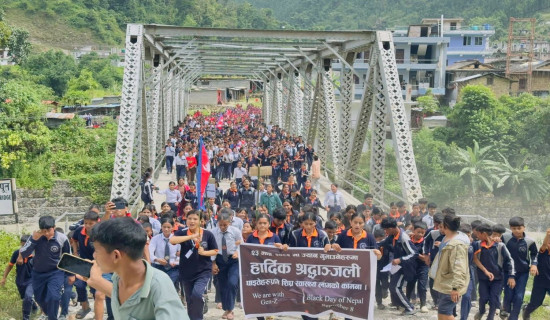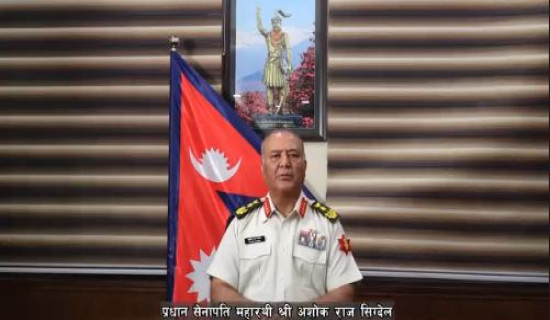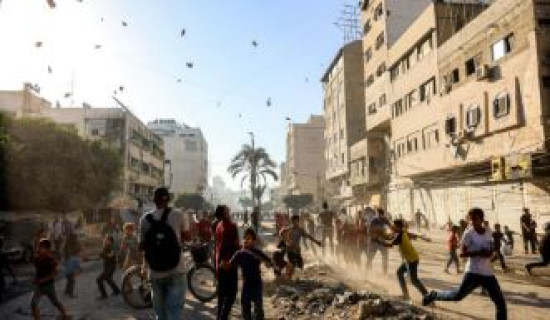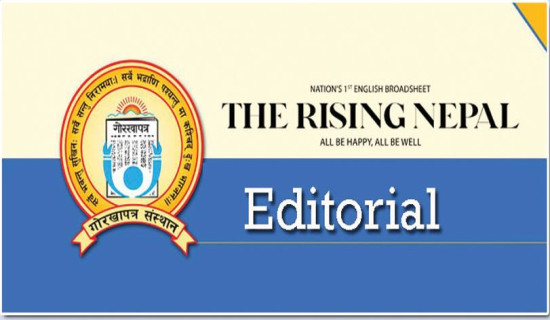- Saturday, 13 September 2025
Gunla festival draws devotees to Swayambhu
BY SUSHMA MAHARJAN,Kathmandu, July 29: The sacred month-long Gunla festival, observed by the Newar community, has brought a surge of devotees to Swayambhu Stupa, a holy site revered by both Buddhists and Hindus. Each morning, the 365 steps leading up the stupa are filled with devotees carrying incense and playing ‘gunla baja’, a traditional music played during this particular festival.
Gunla is the tenth month of the Nepal Sambat lunar calendar, observed from Saun Shukla Pratipada to Bhadra Shukla Pratipada. This year, it falls from July 25 to August 24. According to Ras Joshi, a culture expert, the term ‘Gunla’ comes from two words in Nepal Bhasa: ‘Guni’ and ‘La,’ meaning ‘merit’ and month.’ “Gunla is a month of gaining merit and purification,” said Joshi. “People visit different Buddhist shrines, chaityas and bihars to pay homage, make offerings, and help those in need. Many eat pure and simple food, avoiding meat, garlic, onion and other items to maintain restraint of the body and mind.”
During this month, Swayambhu becomes one of the primary pilgrimage destinations, as it is considered the oldest chaitya in the Valley. According to Author Hemraj Shakya, Swayambhu emerged when Bodhisattva Manjushree drained the water from the Valley, which was once a lake. “It is the first of its kind in the Valley. And all other stupas, gumbas and chaityas resonate with its spiritual presence,” he added.
Devotees arrive at Swayambhu in the early hours. They circumambulate the stupa three times, spinning prayer wheels and chanting prayers. People of all ages, from young children to the elderly, take part in the pilgrimage.
“I have been visiting Swayambhu during Gunla every year, that’s what we learned from our parents,” said 38-year-old Prajita Joshi, who was accompanied by her seven-year-old daughter. “My mother used to tell me that visiting Swayambhu during this time would keep us healthy throughout the year. My daughter also loves watching the monkeys here, which keeps us coming back.”
Besides that, many ‘bajan khalas’ community-based traditional music groups, make the morning more vibrant and livelier through their music. They gather at local twa: chhen (community buildings) before dawn, then make their way up to Swayambhu playing gunla bajan, a unique ensemble of nine traditional instruments including the Dhaa, Bhusya, Dhime and Naye Kheen. “When we play the music, it’s like the whole city wakes up with devotion,” said 22-year-old musician Sajan Maharjan. “We visit Swayambhu every day, not just to play the music but to connect spiritually. It also keeps us physically fit because of the climb.”
Nishat Bajracharya, 28, also shares same thoughts. “Visiting Swayambhu during gunla is different. Music, bells, spinning of prayer wheels are echoed at this time,” he said. “Waking up at 4 am isn’t easy during the rest of the year, but during Gunla, we gather at the twa: chhen, start the procession with gunla bajan, and it feels so refreshing and alive”
Moreover, devotees are arriving not just from central Kathmandu but also from Kirtipur, Patan, and Bhaktapur. Community groups have arranged buses to bring large groups, including elderly citizens.
“We wake up at 3 AM to prepare, and the whole group travels together by a bus,” said Anil Bajimaya from Kirtipur. “We also avoid meat, garlic, and onion during this month.”



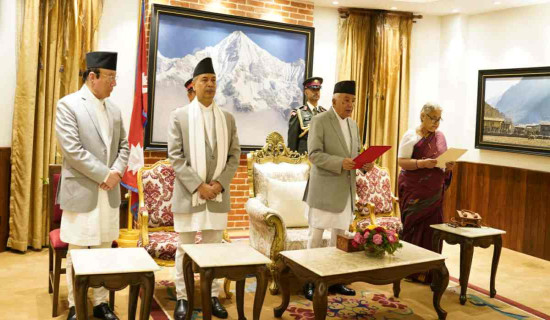
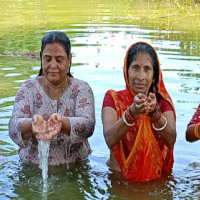
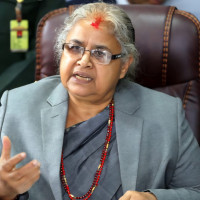


-square-thumb.jpg)
